It's a Wonderful Life
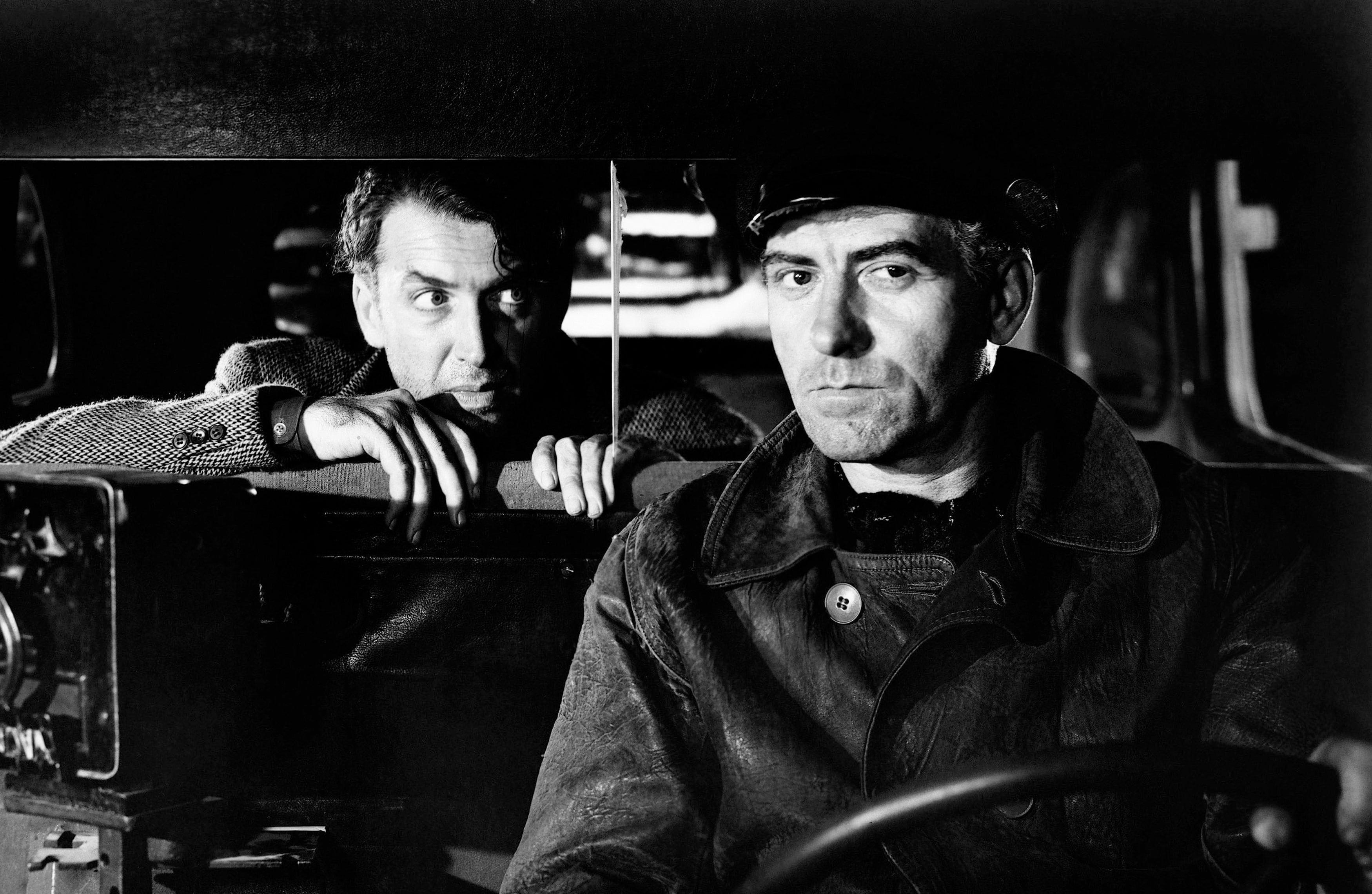
Brief Synopsis
Cast & Crew
Frank Capra
James Stewart
Donna Reed
Lionel Barrymore
Thomas Mitchell
Henry Travers
Photos & Videos
Film Details
Technical Specs

Synopsis
On Christmas Eve, 1945, prayers are heard in heaven for George Bailey of Bedford Falls, New York. To help George, Clarence Oddbody, an angel who has not yet earned his wings, is being sent to earth to keep the despairing George from killing himself on this crucial night. To prepare him for his task, Clarence is shown George's life: As a child, George stops his younger brother Harry from drowning in an icy pond, then catches a bad cold and loses his hearing in one ear. Weeks later, George goes back to work at his after school job in Mr. Gower's drugstore and prevents Gower, who has gotten drunk after learning that his son has died of influenza, from accidentally dispensing arsenic-filled capsules to a sick child. George promises the remorseful Gower never to tell anyone about the incident and he never does. In 1928, as a grown young man, George, who has always dreamed of travel to exotic places, is about to leave on a world tour with money he has saved since high school. That night, at his younger brother Harry's high school graduation party, he becomes attracted to Mary Hatch, a girl who has secretly loved him since childhood. After a Charleston contest that results in an unscheduled splash into the school's swimming pool, they discuss their different ideas for the future until George's Uncle Billy comes for him with the news that his father has had a stroke. After Mr. Bailey's death, George's trip is canceled, but he still plans to leave for college until he learns that the board of directors of his father's financially tenuous building and loan society will not keep it open unless George manages it. Fearing that Mr. Potter, the town's richest and meanest man, will then have financial control of the town, George agrees to stay. Four years later, when Harry returns from college, financed by his brother, George again looks forward to leaving the stifling atmosphere of Bedford Falls and letting Harry run the business. However, when he learns that Harry has just married Ruth Dakin, whose father has offered Harry a good job, he again sacrifices his future to ensure Harry's. That night, George wanders over to Mary's house. Though he is adamant that he never intends to marry, he realizes that he loves her. Soon they are married, but as they leave for their honeymoon, a run on the bank convinces George to check on the building and loan. Because the bank has called in their loan, they have no money, only the honeymoon cash that Mary offers. Through George's persuasive words, most of the anxious customers settle for a minimum of cash, and they end the day with two dollars left. That night, Ernie the cab driver and Bert the cop show George his new "home," an abandoned mansion that Mary had wished for the night of the graduation dance. As the years pass, George continues to help the people of Bedford Falls avoid Potter's financial stranglehold as Mary rears their four children. On the day before Christmas, after the end of World War II, the 4-F George elatedly shows his friends news articles about Harry, who became a Medal-of-Honor-winning flier, while Uncle Billy makes an $8,000 deposit at the bank. Distracted by an exchange with Potter, Billy accidentally puts his deposit envelope inside Potter's newspaper, and Potter does not give it back when he finds it. Later, after Billy reveals the loss to George, they vainly search, while a bank examiner waits. Now on the verge of hysteria over the possibility of bankruptcy and a prison term for embezzlement, George goes home, angry and sullen. He yells at everyone except their youngest child Zuzu, who has caught a cold on the way home from school. He screams at Zuzu's teacher on the telephone, then leaves after a confrontation with Mary. He desperately goes to Potter to borrow the money against the building and loan, or even his life insurance, but Potter dismisses him, taunting him that he is worth more dead than alive. At a tavern run by his friend, Mr. Martini, George is socked by Mr. Welch, the teacher's husband. Now on the verge of suicide, George is about to jump off a bridge when Clarence comes to earth and intervenes by jumping in himself. George saves him, and as they dry out in the tollhouse, Clarence tells George that he is his guardian angel. George is unbelieving, but when he says he wishes that he had never been born, Clarence grants his wish. Revisiting Martini's and other places in town, George is not recognized by anyone and discovers that everything has changed. Harry drowned and Gower went to jail for poisoning the sick child. The town was renamed Pottersville and is full of vice and poverty. When George finally makes Clarence show him Mary, he discovers that she is a lonely, unmarried librarian. Finally, unable to face what might have been, George begs to live again and discovers that his wish is granted when Bert finds him back at the bridge. At home, an elated George is soon greeted by Mary, who has brought their friends and relatives, all of whom have contributed money to help him out. Harry arrives and offers a toast to his "big brother George, the richest man in town." As a bell on the Christmas tree rings, Zuzu says that every time a bell rings an angel receives his wings, and George knows that this time it was Clarence.

Director

Frank Capra
Cast

James Stewart
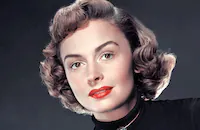
Donna Reed
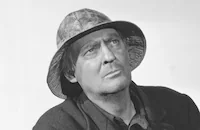
Lionel Barrymore

Thomas Mitchell

Henry Travers

Beulah Bondi
Frank Faylen

Ward Bond

Gloria Grahame

H. B. Warner
Todd Karns
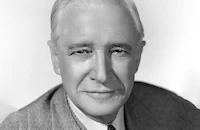
Samuel S. Hinds
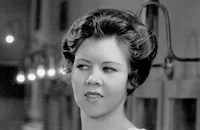
Mary Treen

Frank Albertson
Virginia Patton
Charles Williams
Sarah Edwards
Bill Edmunds
Lillian Randolph
Argentina Brunetti
Bobby Anderson
Ronnie Ralph
Jean Gale
Jeanine Anne Roose
Danny Mummert
Georgie Nokes

Sheldon Leonard
Frank Hagney
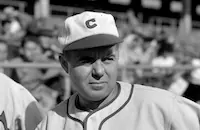
Ray Walker

Charles Lane

Edward Keane
Carol Coombs
Karolyn Grimes
Larry Simms
Jimmy Hawkins
Harry Holman
Hal Landon

Alfalfa Switzer
Bobby Scott
Harry Cheshire

Charles Halton
Ed Featherstone
Stanley Andrews

J. Farrell Macdonald
Tom Fadden
Garry Owen
Marian Carr
Dick Elliott

Ellen Corby
Al Bridges
Edward Clark
Lane Chandler
Bert Howard
Charles Meakin
Frank Fenton
Ernie Adams
Netta Packer
Beth Belden
Herbert Heywood
Eric Hansen
Joe Bernard
Tom Coleman
Monya Andre
Herschel Graham
Irene Mack
Bryn Davis
Michael Chapin
Buz Buckley
Cy Schindell
Bert Moorehouse
Carl Kent
Milt Kibbee
Cedric Stevens
Tom Chatterton
Art Howard
Frank O'connor
Sam Flint
Charles Wilson
Effie Laird
Jean Acker
Phillip Morris

Ed Kane
Wilbur Mack
Almira Sessions
Mike Lally
Harry Denny
Sam Ash
Mary Bayless
Tim O'brien
Max Wagner
Franklin Parker
Lee Frederick
Crew
Gordon Bau
Joseph Biroc
Arthur S. Black
Frank Capra
Frank Capra
Russell A. Cully
Frances Goodrich
Albert Hackett
William Hornbeck
Emile Kuri
Victor Milner
Jack Okey
Clem Portman
Edward Stevenson
Jo Swerling
Dimitri Tiomkin
Richard Van Hessen
Joseph Walker
William Cool White
Michael Wilson

Photo Collections
Film Details
Technical Specs

Award Nominations
Best Actor
Best Director
Best Editing
Best Picture
Best Sound
Articles
The It's a Wonderful Life Memory Book
More than a dozen brief biographies of the prominent cast members detail how It's a Wonderful Life affected their lives and careers. 'Then' and 'now' photographs supplement the career highlights of Jimmy Stewart, Donna Reed, Lionel Barrymore, Beulah Bondi, Gloria Grahame, Frank Faylen, Ward Bond, and others. Like George Bailey himself, It's a Wonderful Life was rescued from oblivion in the late 1970s when it was discovered that the film's copyright had not been renewed and the motion picture fell into public domain and television stations nationwide began freely airing the film. From film remakes and marvelous merchandise to cast reunions and Saturday Night Live's hilarious parody, The It's a Wonderful Life Memory Book explores the adoration of generations of viewers who have fallen under its spell.
Stephen Cox is a freelance writer who has written more than a dozen books on film and television, including The Munchkins of Oz, Here's Johnny! The Abbott & Costello Story, The Addams Chronicles, and The Beverly Hillbillies.
The It's a Wonderful Life Memory Book is currently available from most major book store chains and specialty book shops everywhere.

The It's a Wonderful Life Memory Book
Quotes
Just remember this, Mr. Potter: that this rabble you're talking about, they do most of the working and paying and living and dying in this community. Well, is it too much to have them work and pay and live and die in a couple of decent rooms and a bath?- George Bailey
Where's that money you silly stupid old fool? Where's that money? Do you realize what this means? It means bankruptcy and scandal and prison. That's what it means. One of us is going to jail, well it's not gonna be me.- George Bailey
Get me. I'm givin' out wings.- Nick
No securities, no stocks, no bonds. Nothin' but a miserable little $500 equity in a life insurance policy. You're worth more dead than alive.- Mr. Potter
Hey look, mister, we serve hard drinks in here for men who want to get drunk fast and we don't need any characters around to give the joint atmosphere. Is that clear or do I have to slip you my left for a convincer?- Nick
Trivia
Lionel Barrymore convinced James Stewart to take the role of George, despite his feeling that he was not up to it so soon after World War II.
Originally ended with "Ode to Joy", not "Auld Lang Syne".
Films made prior to It's a Wonderful Life used cornflakes painted white for the falling snow effect. Because the cornflakes were so loud, dialogue had to be dubbed in later. Frank Capra wanted to record the sound live, so a new snow effect was developed using foamite (a fire-fighting chemical) and soap and water. This mixture was then pumped at high pressure through a wind machine to create the silent, falling snow. 6000 gallons of the new snow were used in the film. The RKO Effects department received a special award from the Motion Picture Academy for the development of the new film snow.
As Uncle Billy is leaving George's house drunk, it sounds as if he stumbles over some trash cans on the sidewalk. In fact, a crew member dropped some equipment right after Uncle Billy left the screen. Both actors continued with the scene ("I'm all right, I'm all right!") and director Frank Capra decided to use it in the final cut.
Ironically, after the initial flop of the film at the box office, its popularity grew after its copyright expired due to a clerical error and it was shown repeatedly on American television (especially at Christmas) without any royalties going to Frank Capra.
Notes
Philip Van Doren Stern's story, which, according to many contemporary and modern sources, was originally written in November 1939, was enclosed by him in his 1943 Christmas cards. Although it was privately published by the author and copyrighted in 1945, it was not published in book form until many years later. According to the film's pressbook, Cary Grant brought the story to the attention of RKO, to whom he was under contract. RKO then bought the screen rights, intending it as a starring property for him. In September 1945, Hollywood Reporter announced that Gary Cooper was set to co-star with Grant. According to a November 1945 news item, the story was then sold to Liberty Films as a vehicle for James Stewart.
It's a Wonderful Life was the first production of Liberty Films, a company started by Frank Capra, William Wyler, George Stevens and Samuel J. Briskin, shortly after their release from active service during World War II. The company, which released this film under an agreement with RKO, subsequently released films of the partners under agreements with Paramount. The company was dissolved in April 1951. According to Bank of America archival records, Liberty borrowed $1,540,000 from the bank to make It's a Wonderful Life.
It's a Wonderful Life was James Stewart's first film after four years of military service during World War II. It was also Frank Capra's first commercial film since Arsenic and Old Lace, released in 1944, but filmed in 1941. Just prior to the start of production, Todd Karns, the son of character actor Roscoe Karns, replaced David McKay in the role of "Harry Bailey" due to a change in McKay's draft status. Victor Milner was listed as sole cameraman on Hollywood Reporter production charts in April 1946, but was later replaced by Joseph Walker and Joseph Biroc. According to news items in Hollywood Reporter and information in the pressbook, some scenes in the picture were filmed at the RKO Ranch in Encino, CA. A Hollywood Reporter article noted that location shooting lasted one month, during which the biggest snow storm in the history of movies was made, requiring 300 tons of limestone and fifty tons of white plaster after only two weeks of shooting the sequence. According to modern sources, RKO special effects expert Russell Shearman developed a new, more realistic looking snow especially for the picture. Capra's autobiography notes that the Charleston contest scene was shot at the newly built Beverly Hills High School gymnasium after he heard about the moving floor covering the swimming pool.
According to memos from RKO executive William Gordon to editor William Hornbeck, several items within the picture were considered problematic, among them references to real places and persons (most of which were deleted from the final film), and recitation of the Lord's Prayer during the scene in Martini's bar (which was re-written as an informal prayer). Capra's autobiography and other modern sources also mention the fact that the first kiss between characters "Mary" and "George" was considered too intense by the Breen Office. Although Stewart was the only name mentioned for the role of George after Liberty bought the story, several other actors and actresses were mentioned for other roles. In a modern source, documents in Capra's own hand mention numerous possibilities for various characters, the most prominent of which were Olivia de Havilland, Martha Scott and Ann Dvorak for the role of Mary, and Dan Duryea and Charles Bickford for the role of "Potter." Other modern sources note that Jean Arthur, whom Capra reportedly wanted to play Mary, was unavailable because she wanted to do a Broadway play.
A private preview of the picture was held at the Ambassador Hotel in Los Angeles on December 9, 1946. According to Hollywood Reporter news items, over 350 people attended, among them Clark Gable, Gary Cooper, Claudette Colbert and other celebrities, who were mobbed by so many fans that police had to be called in to control the crowd. One item also noted that a New York preview was even more enthusiastically attended by fans. Although many modern sources, including Capra himself in his autobiography, have commented that the film was not a critical or commercial success, this was not entirely the case. Most available reviews did praise the film, with comments ranging from "great" to "wonderful." Although the film May not have lived up to financial expectations of those involved, it did bring Capra a Golden Globe Award for Best Direction and an Oscar nomination in the same category. Additional Oscar nominations went to the film for Best Picture, James Stewart for Best Actor, William Hornbeck for Best Film Editing and RKO's sound department for Best Sound Recording. Newsweek for December 30, 1946 featured a scene from the picture on its cover and an article about Stewart and Capra's return to work after the war.
On March 10, 1947, Lux Radio Theatre broadcast a radio adaptation of the story, starring Stewart, Donna Reed and Victor Moore as "Clarence," and on May 8, 1949, the Hallmark Playhouse broadcast a version, also starring Stewart. The film was remade in 1977 as a television movie for the ABC television network under the title It Happened One Christmas, starring Marlo Thomas in a reworking of the George Bailey role. Although a Broadway musical version of the story was said to be in the works in 1986, hopefully to star James Stewart as Clarence, it was never produced. On December 8, 1997, a live performance of the 1947 radio script was taped at the Pasadena Playhouse as a tribute to the recently deceased Stewart. It's a Wonderful Life-The Radio Play starred Bill Pullman, Nathan Lane, Martin Landau and Minnie Driver, and was broadcast nationally on public television stations. The picture was colorized by Hal Roach Studios in 1986 and by American Film Technologies in 1988, provoking controversy among many of the surviving cast and crew and other fans of the picture. Capra himself was quoted in Newsweek as saying "They ruined it. They splashed it all over with Easter-egg colors and they ruined it. Even the villain looks pink and cheerful."
In 1974, the copyright on It's a Wonderful Life lapsed, and the film was generally assumed to be in the public domain-and therefore free to any company that wished to broadcast it or distribute it on video. Television and cable companies aired the film repeatedly during the Christmas season, and several decades after its release, It's a Wonderful Life became established as a holiday classic. It is often mentioned in lists of "most popular films" reprinted in modern magazines. An article in The New Yorker's "Talk of the Town" column in 1979 describing the author's annual It's a Wonderful Life screening party exemplifies the popularity of the film. In 1987, a Florida judge ordered a man to watch the film as part of his sentence for killing his ill wife, and then trying to kill himself. According to the judge, he wanted to show the man the value of life. That same year, former National Security Advisor Robert C. McFarlane told a New York Times interviewer that watching the movie gave him the inspiration to go on after his own failed suicide attempt in February 1987.
In June 1993, however, Republic Pictures Corp. announced that it held exclusive rights to the film. Citing a 1990 Supreme Court ruling involving the 1954 film Rear Window, Republic claimed that because it held the rights to both Van Doren Stern's short story and the music used in the film-and possessed the original negative-it effectively owned the picture. Unauthorized video copies of the film were destroyed, and the NBC network acquired exclusive television rights.
In November 1996, cable network Comedy Central announced plans to broadcast a satirical one-hour program titled Escape from a Wonderful Life, which was to incorporate footage from the original film. Comedy Central maintained that although Republic owned the underlying story and the musical score, the film's images were still in the public domain, and vowed to fight Republic in court if the studio attempted to interfere with the project. However, the dispute between Comedy Central and Republic ended when both parties realized they were at least partly owned by media conglomerate Viacom, Inc. Production on the spoof was then cancelled.
In December 2002, two NBC television network broadcasts of It's a Wonderful Life included a specially prepared narration by former president George Bush. His 130 minute-long narration was included on the separate audio program (SAP) for blind and visually impaired viewers.

Miscellaneous Notes
Wide Release in United States January 7, 1947
Released in United States on Video September 1987
Based on the short story "The Greatest Gift" written by by Philip Van Doren Stern in November 1939, and enclosed in his Christmas cards in 1943. He had the story privately published and copyrighted in 1945.
Cary Grant brought the story to the attention of RKO where he was under contract and they bought the screen rights, intending to star him in the property.
Completed shooting July 17, 1946.
Began shooting April 15, 1946.
Selected in 1998 as one of the AFI's list of 100 Greatest American Films of the century.
Selected in 1990 for inclusion in the Library of Congress' National Film Registry.
Released in United States December 20, 1946 (Academy Award qualifying run)
Wide Release in United States January 7, 1947
Released in United States on Video September 1987
Re-released in United Kingdom December 1997.
Released in United States December 20, 1946













